Do you guys know about to dye with ammonia?
In Germany you can buy ‘Räuchereiche’, translated word by word it means: smoked oak.
It has nothing to do with real smoke, but is a chemical reaction of ammonia with the tan acids in the wood. The more acid in the wood, the better reaction. I wondered to use it in bowery.
In the last month I did a lot of experiments with different woods. For example fresh osage can be aged over night so that it looks like 10 years old. Every woods behaves a bit different, but I had great results with elm, ash, dogwood (gets a very nice warm grey).
I noticed three important things.
First this dye is not on the wood, it is in the wood at least 3-4 mm.
Second the color is stable, the acid gets the color by a chemical reaction.
Third the structure of he wood changes, it gets a super smooth surface and the elasticity increases. I will do more tests from time to time.
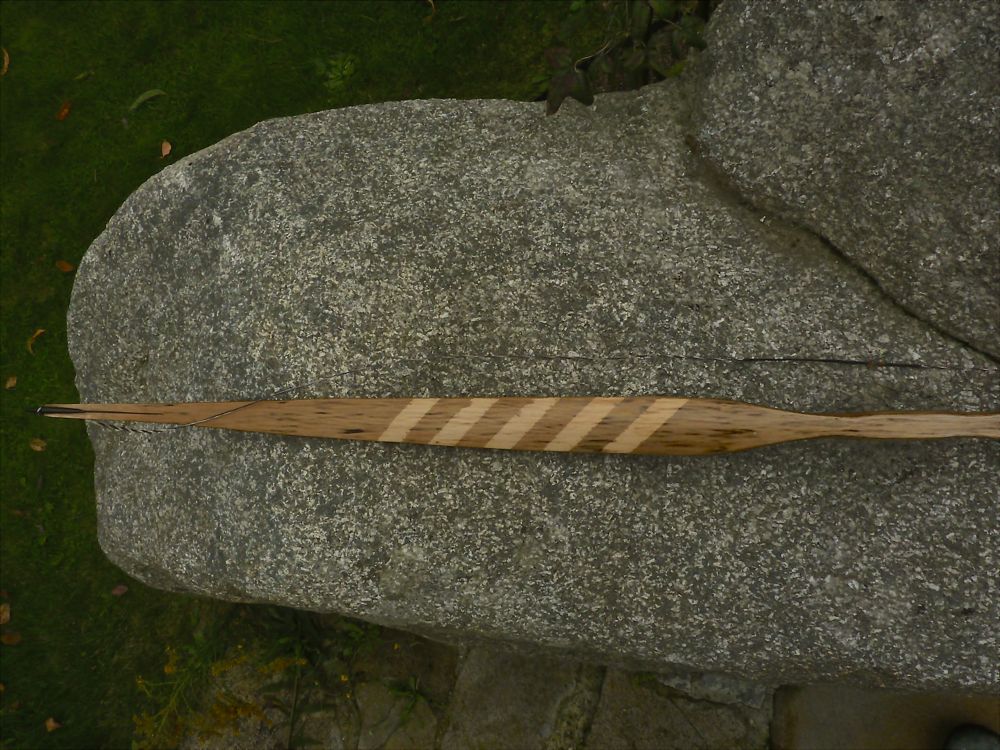
Here you see the difference between normal and smoked. Before the smoking process I taped the limbs diagonally. In the detail pic above the border is a bit fuzzy, I like that how it came out. The ash developed very nice colors, especially at the growth rings. No pigments added.
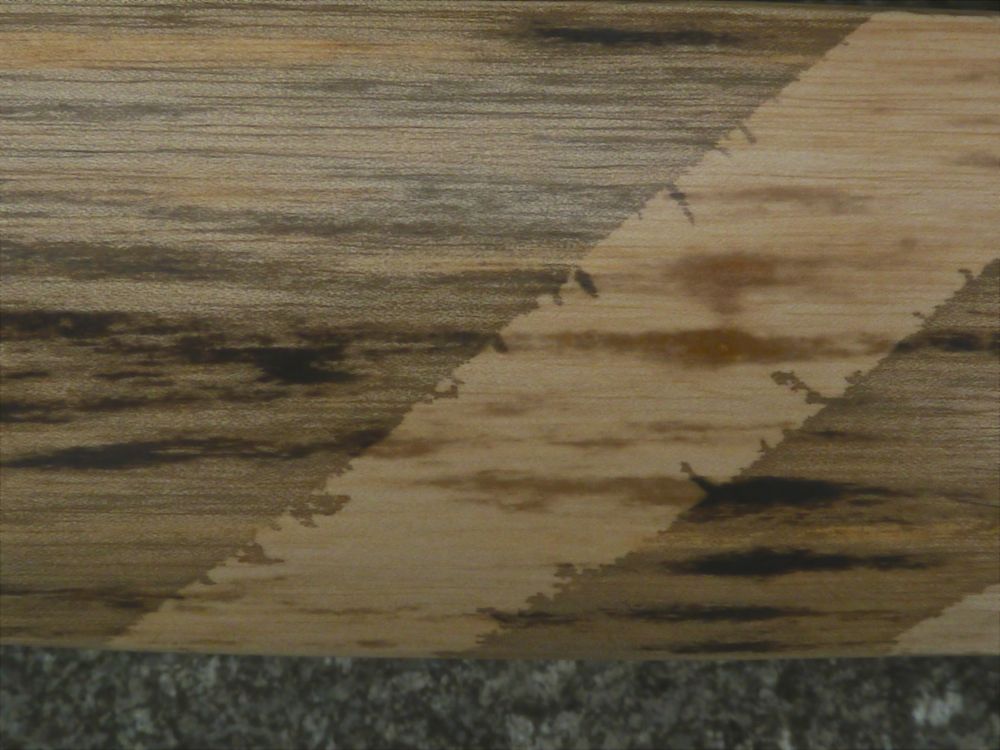
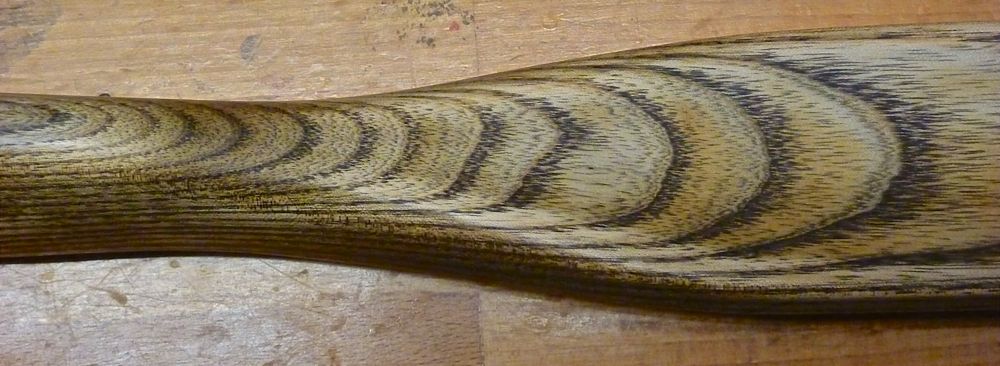
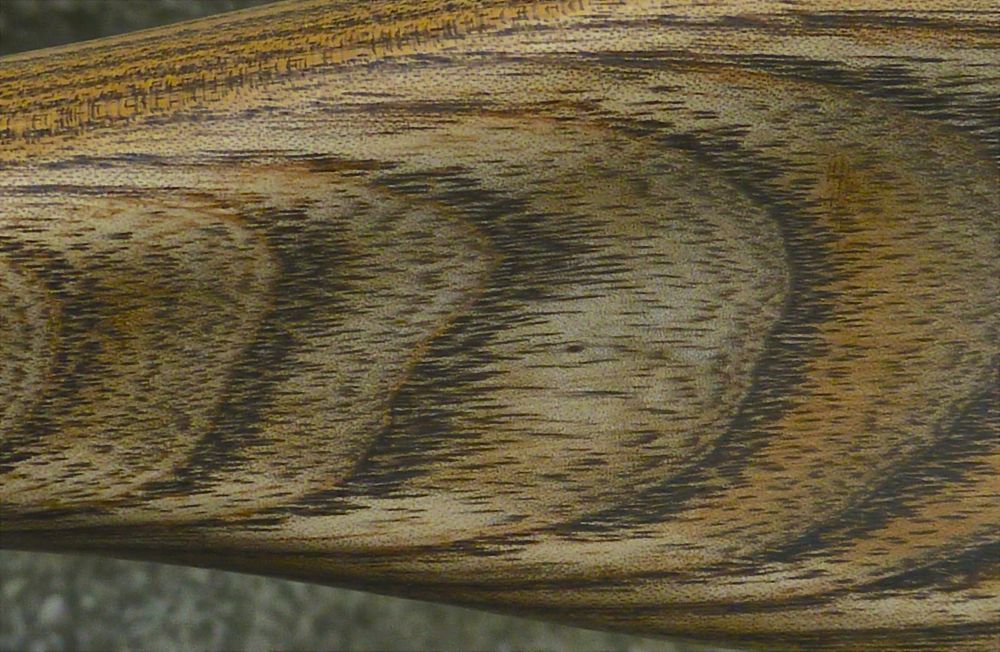
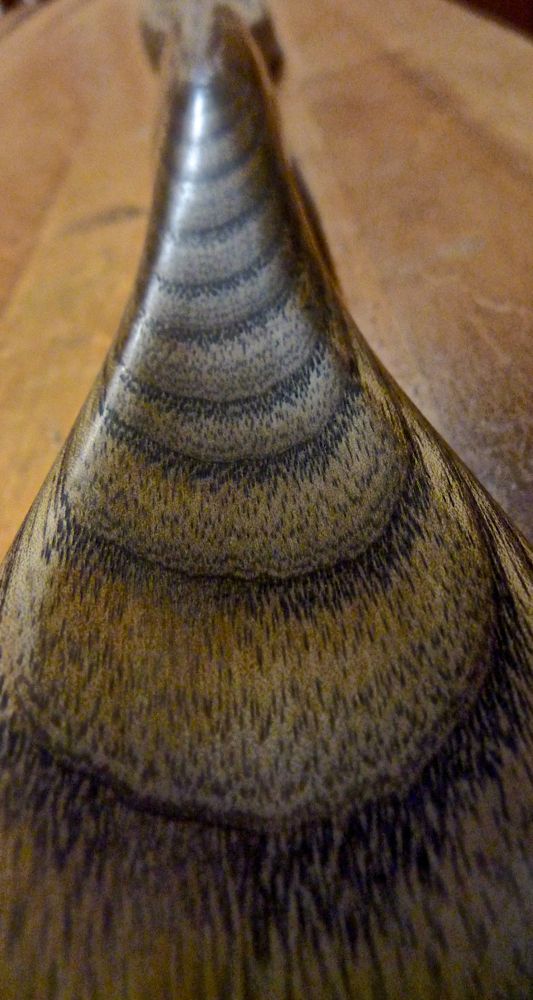
It is a HLD with a deep valley, it is 63“ long. All added parts, overlay, wedge inlay, arrow pass is buffalo horn. The tips are mildly flipped.
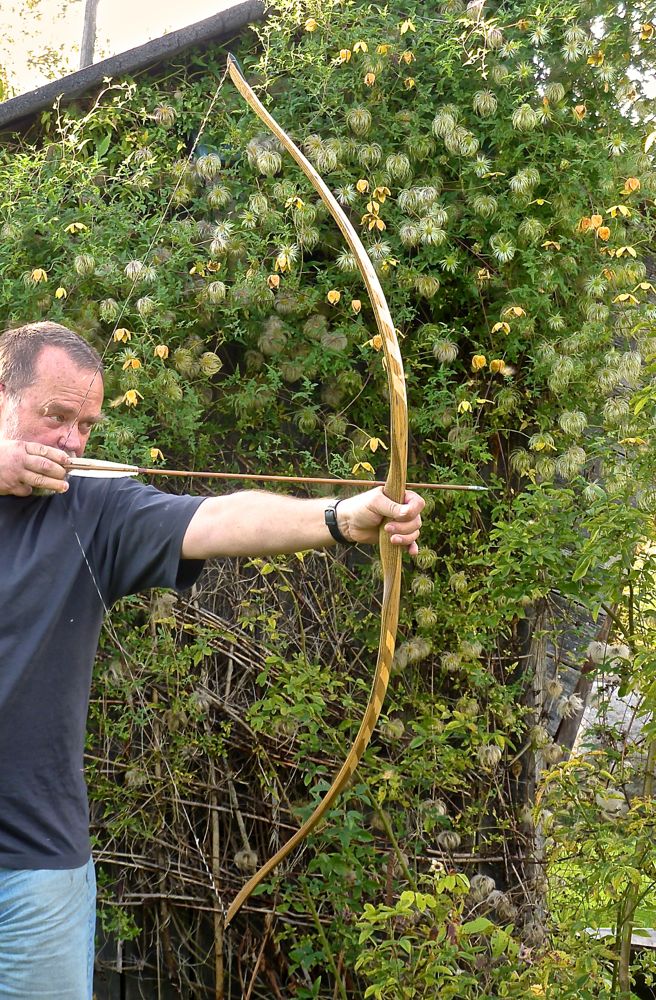





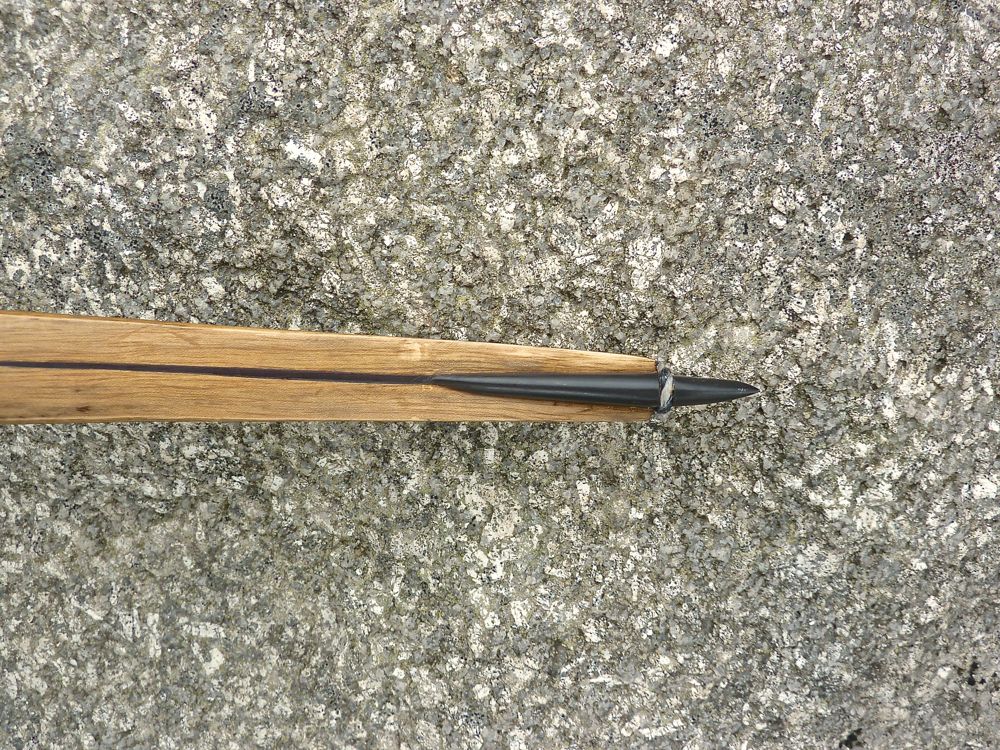

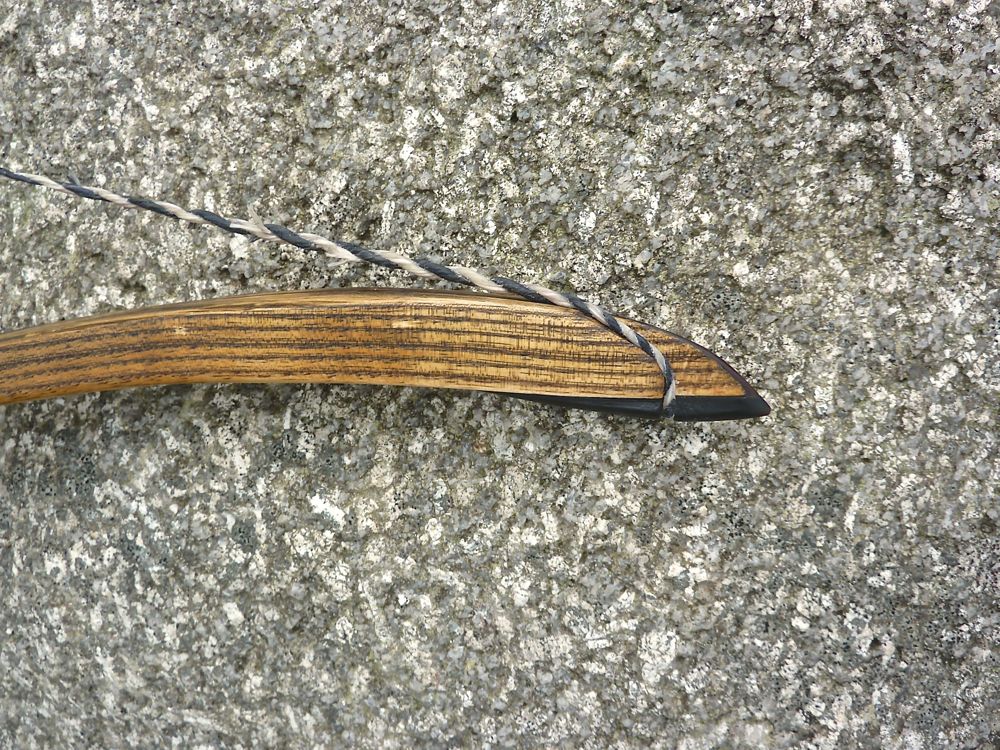
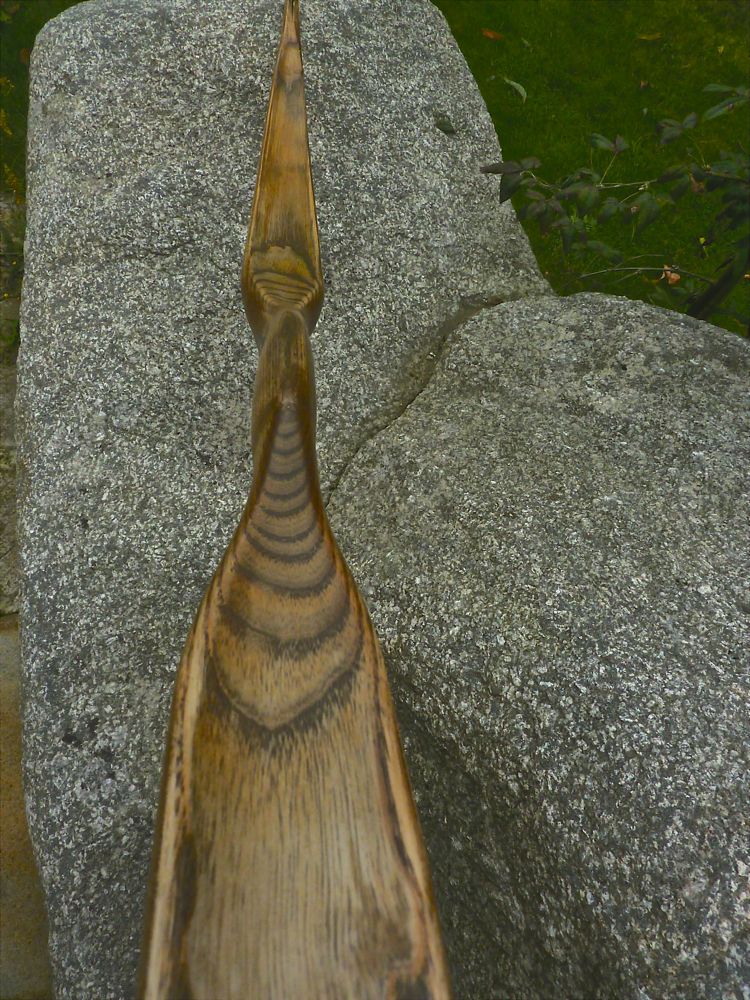

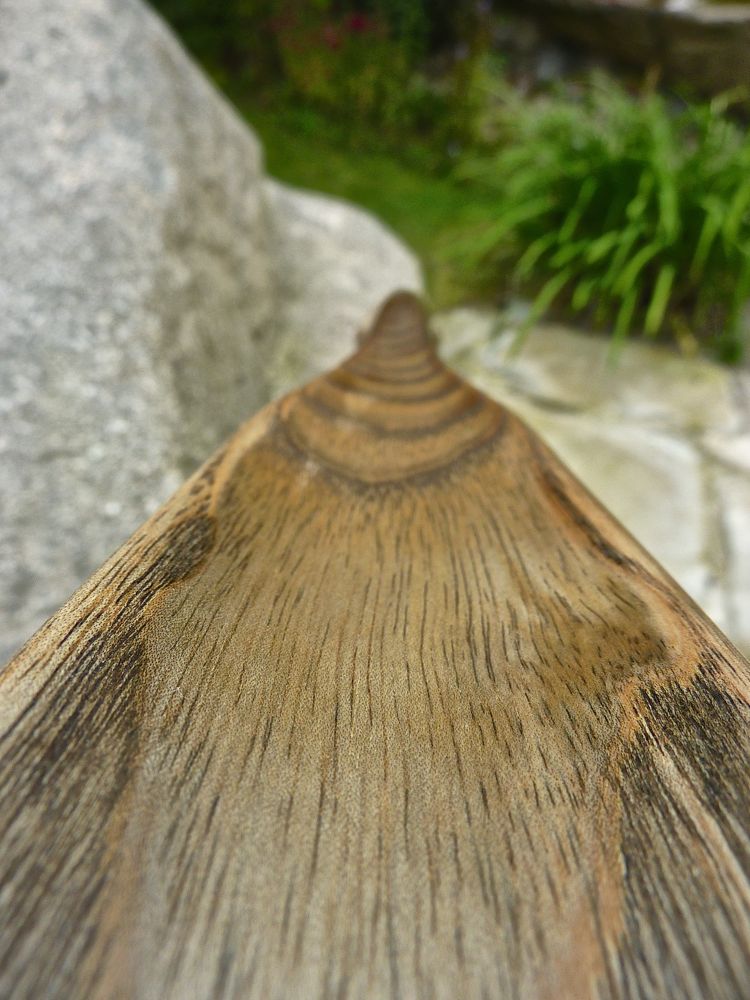
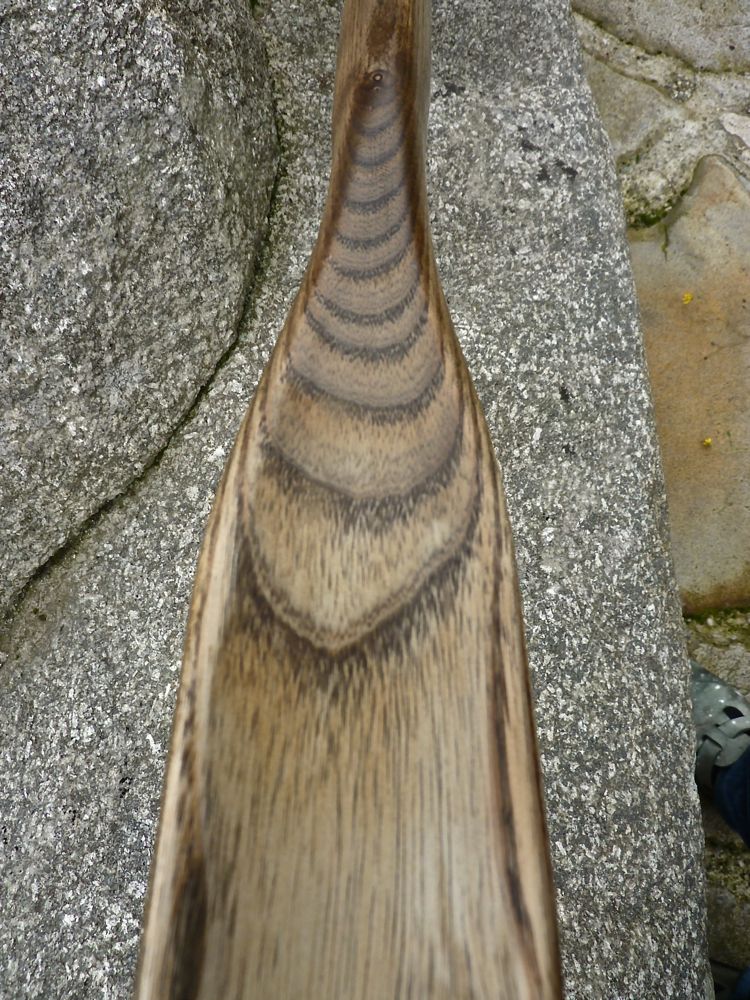
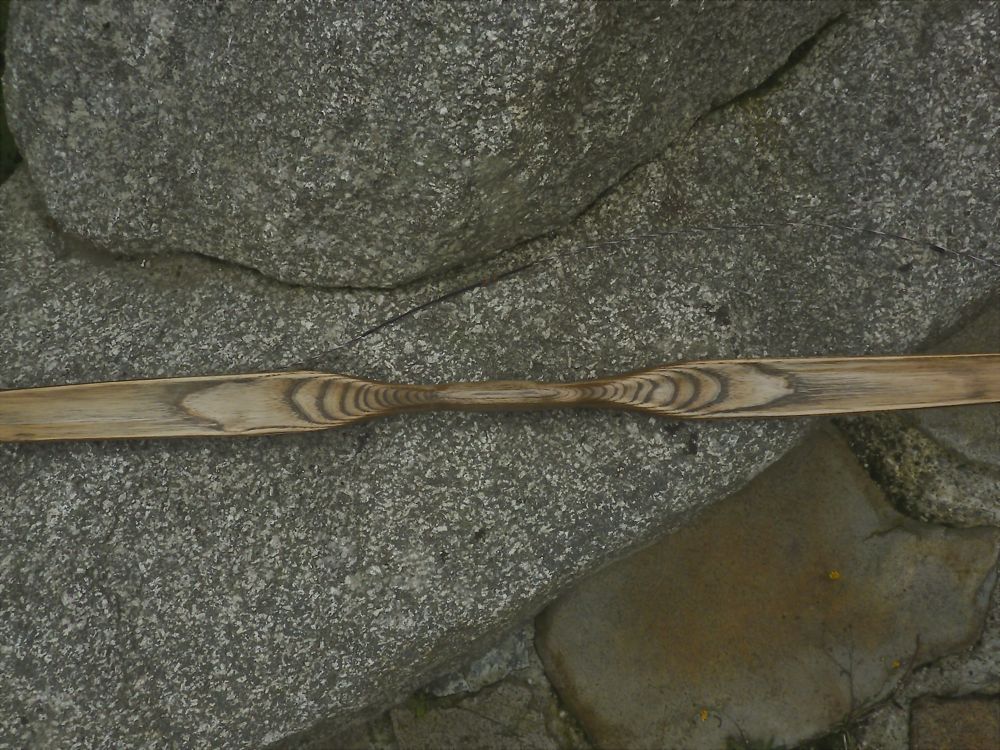
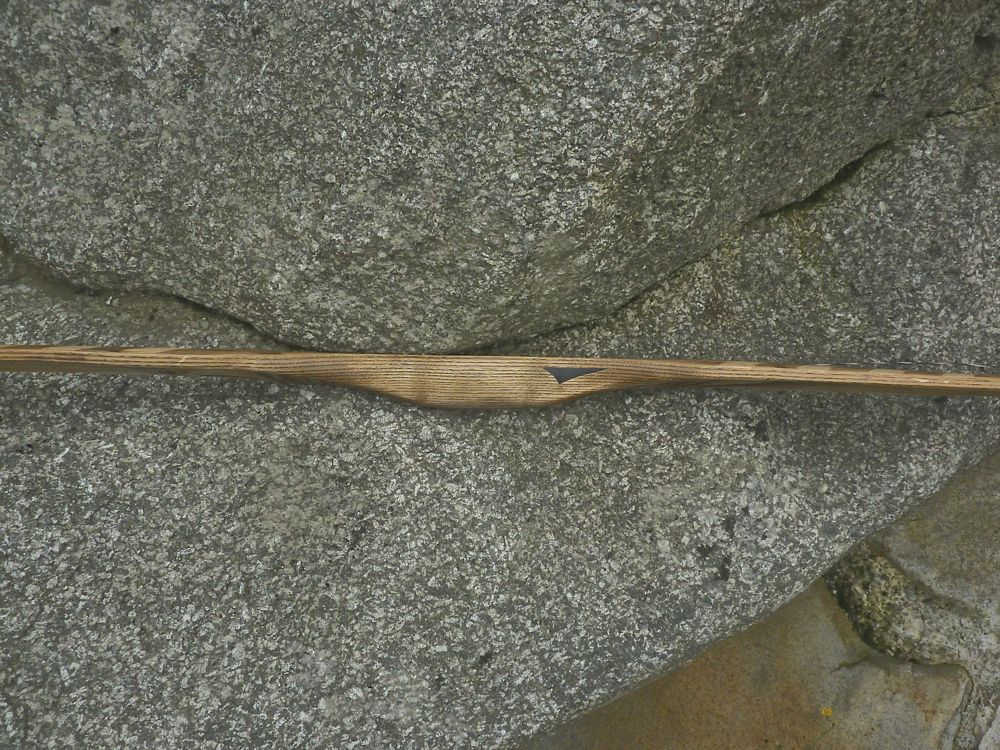
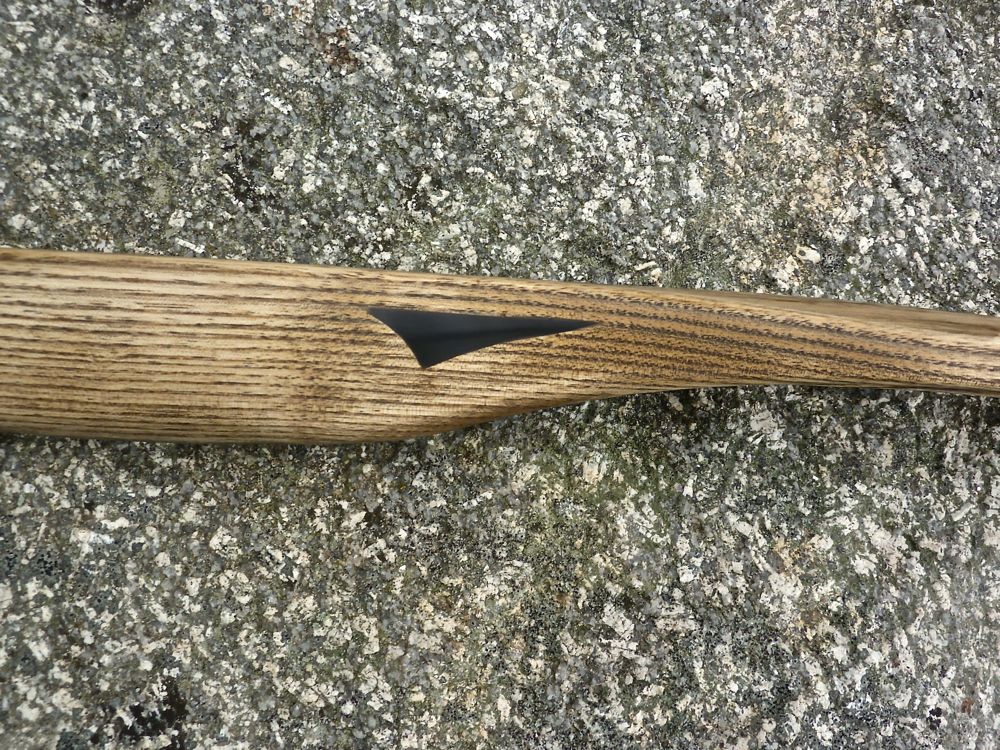
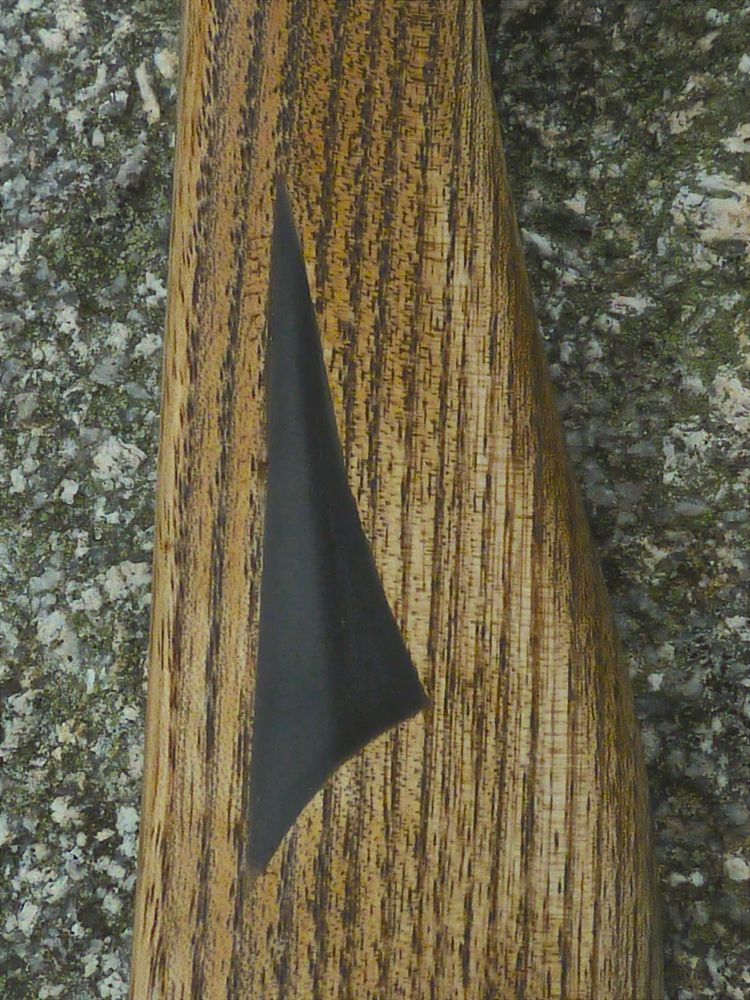
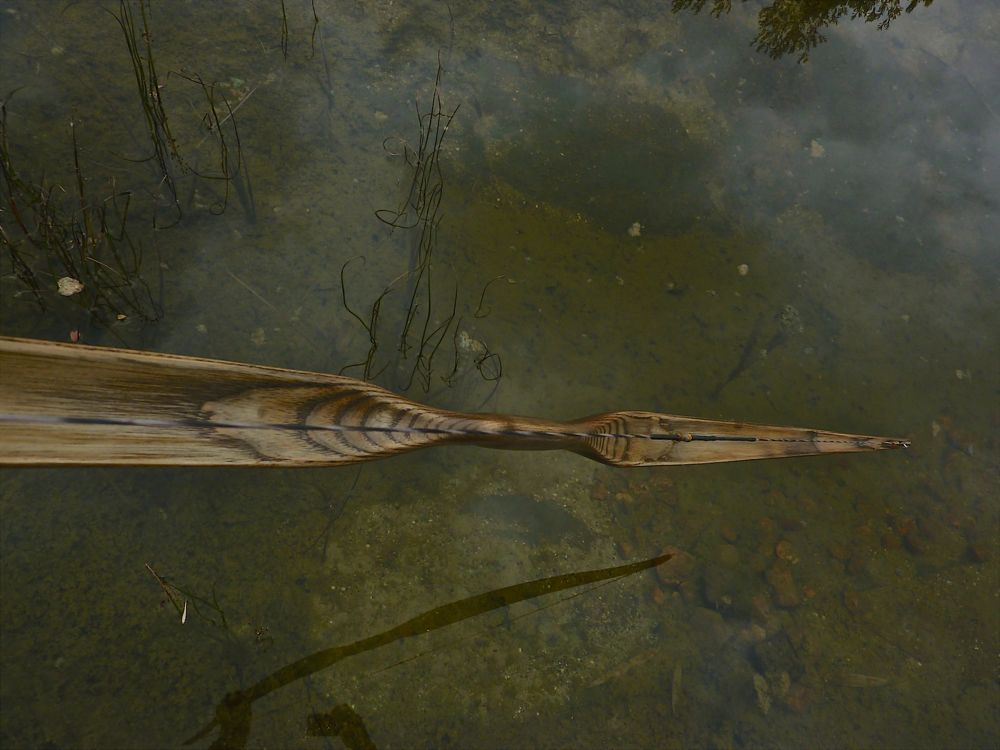
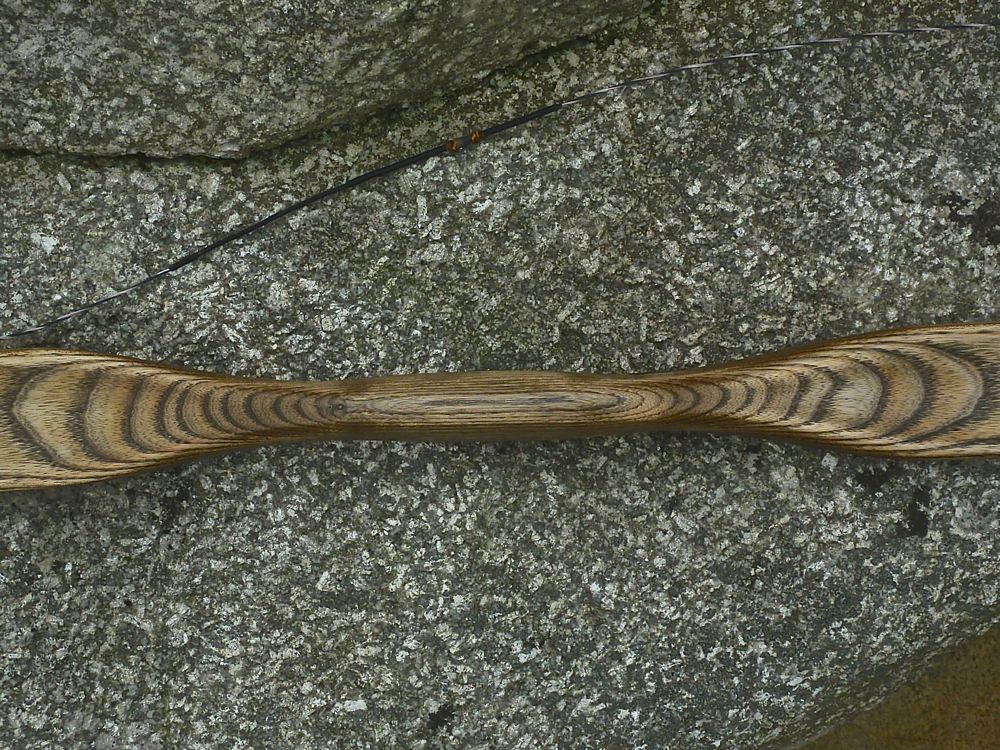
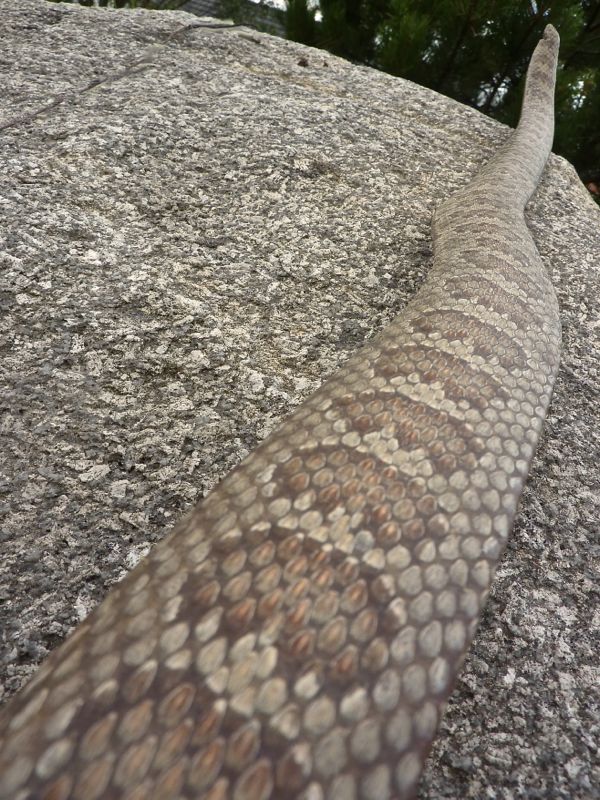
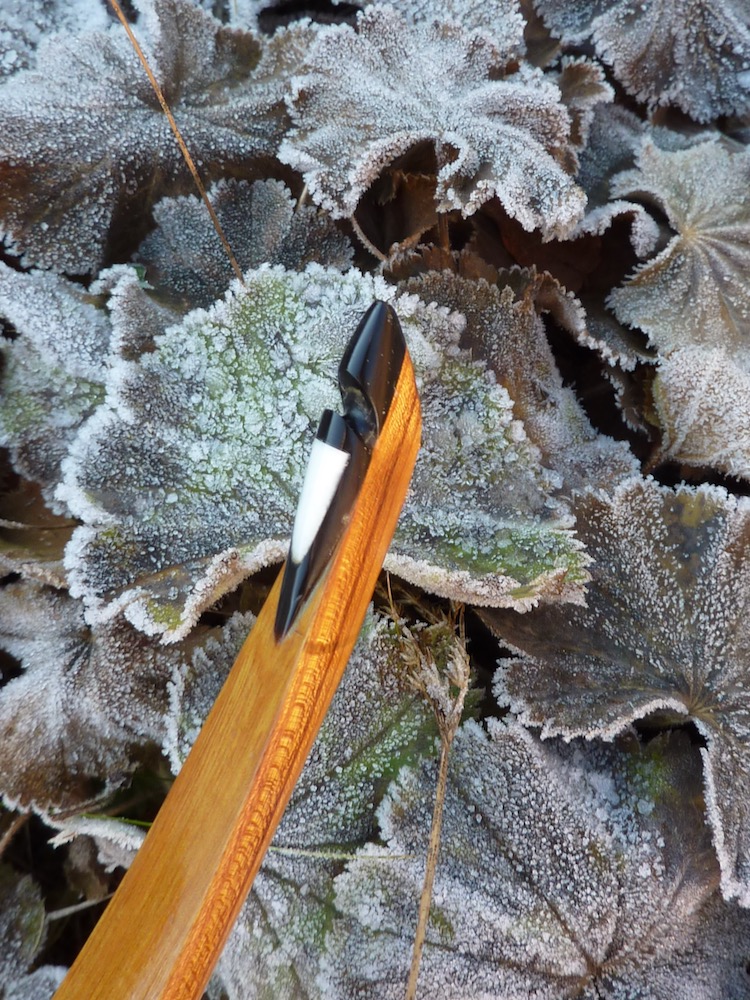
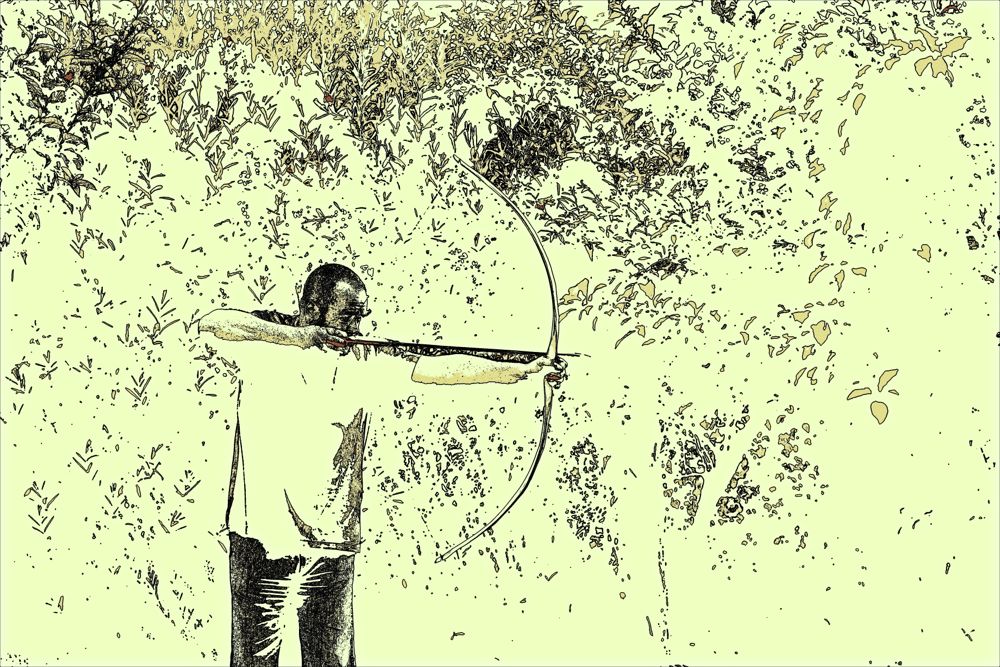
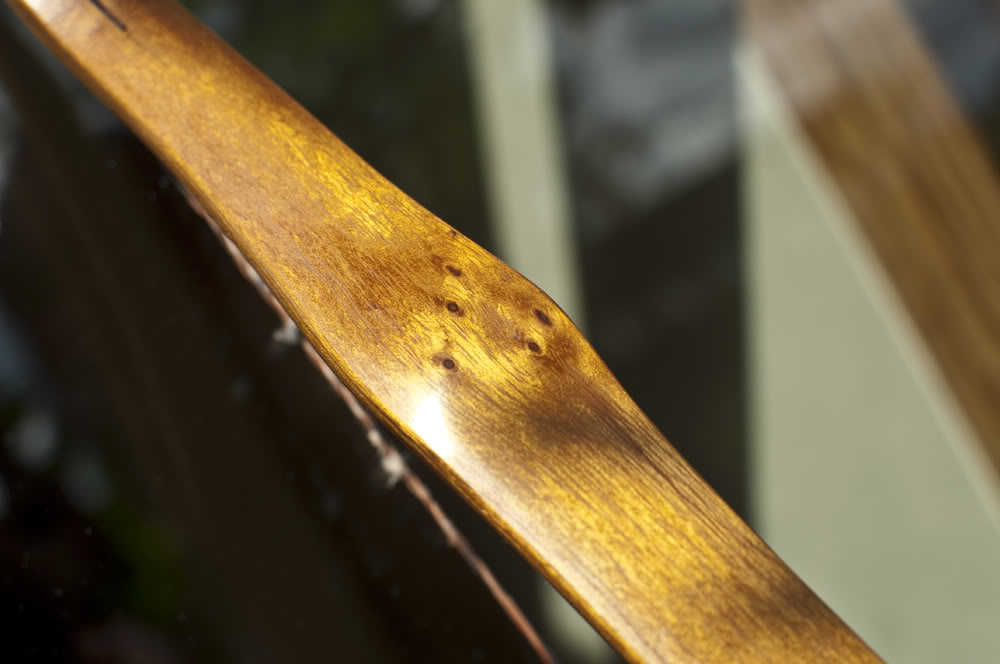
10 Comments
Hi Simon,
fumed, hld, horn : you have magnified this “simple” ash stave into a work of art, bravo !
I tried the amonia treatment on black locust: only the heartwood reacted! Do you know how the sapwood of these different woods reacts: yew, hackberry, red elm? anyway I’ll do some tests … thank you for all the information on your site!
Hi Olivier,
Meanwhile I’ve done a lot of tests with different woods. Every wood which contains tanin acids reacts with the amonia. The more it is there, the darker it gets.
On some woods occur special effects such as yew, dogwood and other. Best is to do some testing before you fume a bow. I do this in plastic container or in a glass with twist of lid. I use a small piece of wood and make one surface nicely (brought done to a ring and sanded). So you can estimate the colors on your bow later.
Send me pics of your results, I’m always curious …
by the way, how many FPS do you estimate to gain with the hld technic in this case ?
thanks
Olivier, that is a difficult question. I don’t own a chrony myself and can only do speedtesting from time to time.
I estimate the speed gain at about 5-8 fps. But it is just an estimation.
To tell the truth two nearly identical bows were needed, one with a common design and one a HLD. Hard to find or to do.
I once compared an extreme osage static to a straight limb HLD elder. Both 40#, shot with the same arrows. The result was: the elder was significant faster. I remember I couldn’t believe it, from there on I built some dozens of HLDs … … and still do. It is a fascinating design.
Hi Simon,
thanks for your answers,
I’ll send you my tests asap
Hi Simon, I have bothered you in the past already. I have a piece of ash that I want to make a bow from. I was thinking English long bow but your design here interests me a lot. You say this is asymmetric, why and by how much?
You also have spliced in a piece of horn on the tips, is this purely decorative or are they helping to keep the tips flipped? And how far does the tip do they go?
Sorry for all the questions, bin ein Fan von dir. Peter in the Prignitz
Hi Peter, no problem with questions (if I could answer …).
I make most of my bows asymetric (like an ELB), because the arrow is more centered in the geometric middle of the bow. Mark the geometric center, go 1″ above and 3″ below and you will have what I do. I like the balanced feel of this asymetry.
Splicing horn in the tips is not only very decorative, it stiffens the tips a lot. So you can work them out more slender. The go through the entire tip. A “how to” is here: http://primitive-bows.com/buildalong-of-a-hld-bow-no-33/.
In this case (bow no. 52) the tips were layed out as a pin nock, but got an additional slim horn overlay.
All the best, buddy
Simon
Hey, my name is Chris and I’ve been following your work for a few months now. Huge fan!
Though I’ve only made two successful bows, I feel that the HLD design is the most sustainable one I’ve seen and I want to make one of my own.
I’m particularly interested in the way you executed it here and always look at it for inspiration. It looks closer to a hollow limb version of a pyramid bow.
I’m trying to get mine to bend at floor tiller and it does when I scrape but eventually it stiffens and doesn’t bend after waiting, which doesn’t normally happen when I floor tiller.
My question is, how deep is the valley of this pyramid design compared to some of your other ones that doesn’t taper much until the end?
Does the depth of the valley get shallower toward the tip?
And how do you manage a knot hole with this design?
I already made a small bow with hld but the bigger one is my current headache.
Thank you for taking the time to read, it’s a lot I know haha.
Love your work, again. Cheers.
Hey. I may be doing a double post here but, long time fan of your work.
Especially this one here, it looks like a cross between the hollow limb design and the pyramid bow design.
I’ve been trying to recreate it and I have some questions.
1. How do you solve the problem of having the bend when scraping but after some time not being worked on, it resets to it’s original stiffness?
2. In the pyramid version of the HLD, does the depth of the valley become more shallow as it goes toward the tip for it to bend a little better?
I made a small version of the design and it bends well but I had to scrape a lot, I am afraid of making the big version of this bow way too light.
Thank you for taking out the time to read. I appreciate your work and want to see more discoveries about this design.
Cheers.
Hi Chris,
Q1:
sorry, really don’t know what you’re talking about. Never had a phenomenon like this.
Q2:
Yes, limbs are getting narrower and depth of valley is getting less deep naturally.
Search for the best stave possible, avoid knots in working limbs.
Good luck for your project!